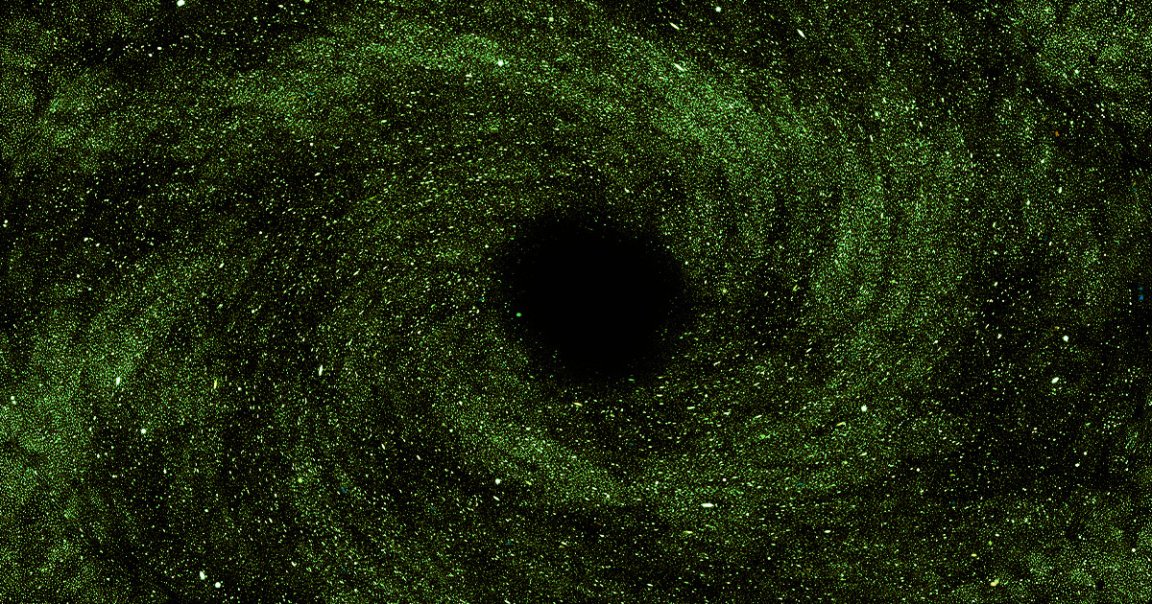
The Hole Picture
By observing the orbits of stars in their pull, astronomers say they’ve found evidence that black holes are surrounded by substantial amounts of dark matter, according to a new study published in The Astrophysical Journal Letters.
Dark matter is tricky to study because you can’t observe it directly — even though it’s believed to make up some 27 percent of the universe, dwarfing the mere five percent of ordinary, or baryonic, matter that we can see.
We can, however, observe dark matter’s gravitational influence, which is where the stars come into play. The researchers looked at two nearby black holes, each forming a binary system where a companion star continues to orbit it. Normally, the orbits of these companion stars should gradually decay at an extremely minor rate of around 0.02 milliseconds per year.
In reality, what they observed blew that out of the water: an astonishingly higher rate of one millisecond per year — 50 times the theoretical estimation.
Gravitational Drag
Those findings, the researchers suspect, reeked of some dark matter meddling. So to corroborate the hunch, the researchers ran a computer simulation of a dark matter dynamical friction model, which helps calculate the loss of momentum of objects in space due to what is, in effect, “drag” caused by gravity.
They soon found that the simulated rate of orbital decay based on the dark gravity model lined up “precisely” with the rates of decay they observed in the companion stars, indicating that large amounts of dark matter, which would produce enough gravity to tamper with nearby orbits, are clumping around black holes.
“This is the first-ever study to apply the ‘dynamical friction model’ in an effort to validate and prove the existence of dark matter surrounding black holes,” Chan Man-ho, an astrophysicist at the Education University of Hong Kong, said in a statement. “The study provides an important new direction for future dark matter research.”
Easier Pickings
The team’s findings are some of the best evidence yet of a long-theorized “density spike” near black holes that should form from accreting dark matter.
Chan notes that previous studies relied on detecting gamma rays and gravitational waves, which are mostly produced by rare events like black hole mergers. Understandably, that doesn’t yield a lot of data for scientists to work with. Stars orbiting a black hole, on the other hand, are a little easier to come by.
“In the Milky Way Galaxy alone, there are at least 18 binary systems akin to our research subjects, which can provide rich information to help unravel the mystery of dark matter,” Chan said.
More on dark matter: Physicists Say There May Be Entire Planets Made of Dark Matter